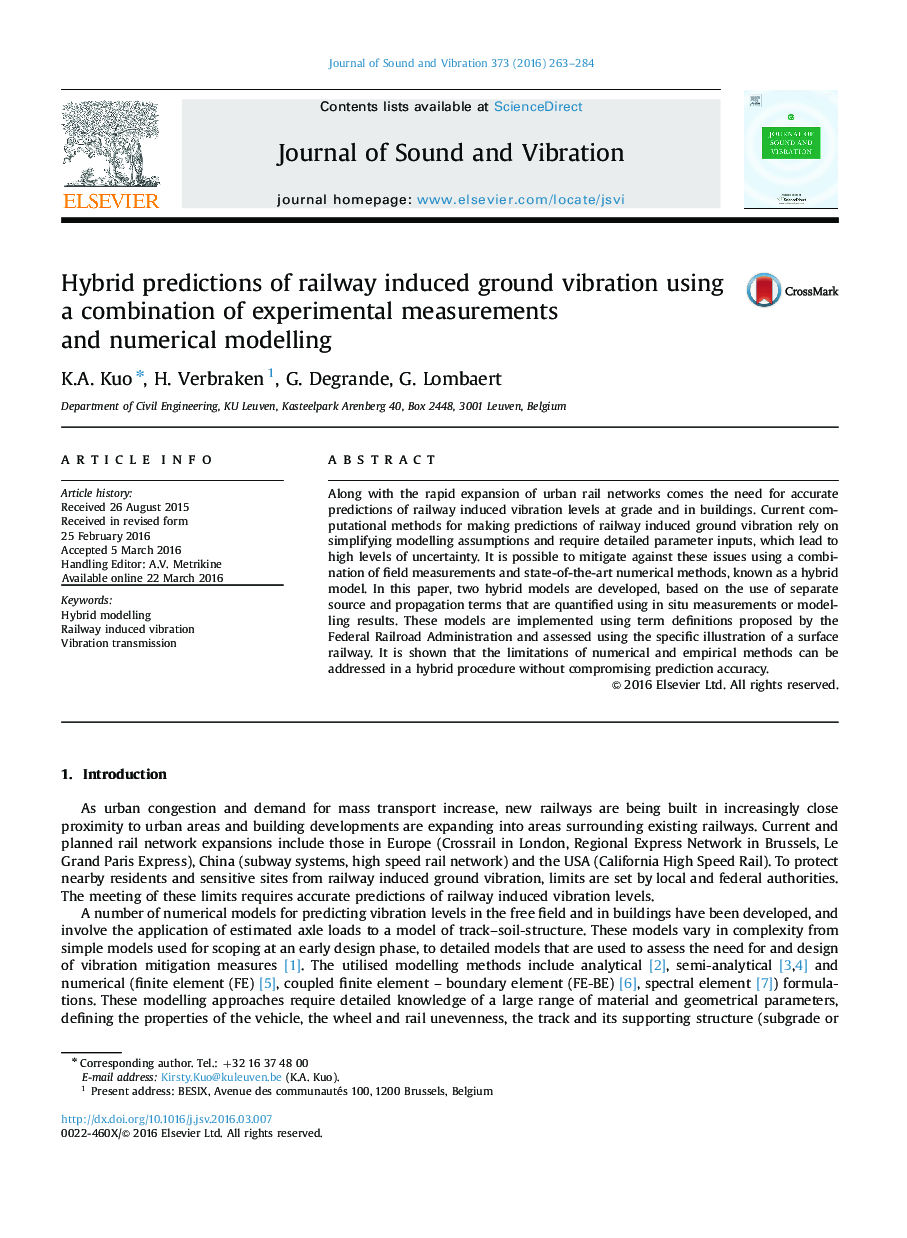| Article ID | Journal | Published Year | Pages | File Type |
|---|---|---|---|---|
| 287009 | Journal of Sound and Vibration | 2016 | 22 Pages |
Along with the rapid expansion of urban rail networks comes the need for accurate predictions of railway induced vibration levels at grade and in buildings. Current computational methods for making predictions of railway induced ground vibration rely on simplifying modelling assumptions and require detailed parameter inputs, which lead to high levels of uncertainty. It is possible to mitigate against these issues using a combination of field measurements and state-of-the-art numerical methods, known as a hybrid model. In this paper, two hybrid models are developed, based on the use of separate source and propagation terms that are quantified using in situ measurements or modelling results. These models are implemented using term definitions proposed by the Federal Railroad Administration and assessed using the specific illustration of a surface railway. It is shown that the limitations of numerical and empirical methods can be addressed in a hybrid procedure without compromising prediction accuracy.
